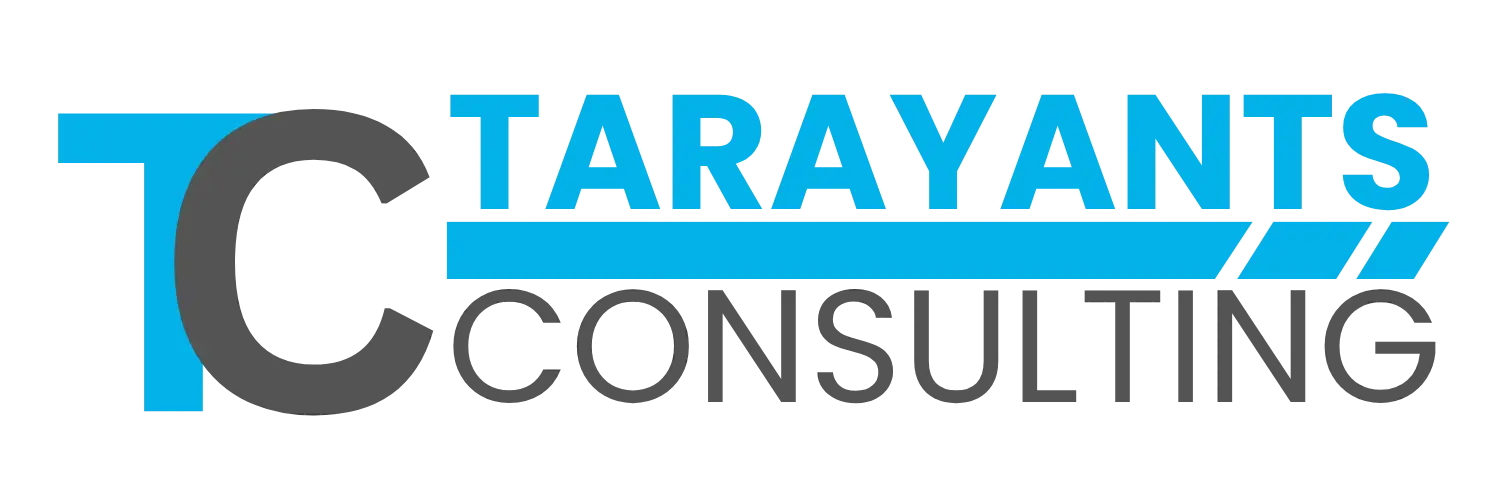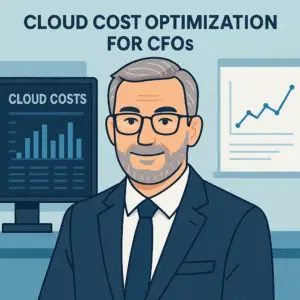Executive Summary
Cloud costs are rising fast. For many organizations, they now rank among the top three operational expenses. Unlike HR or finance, cloud spend often lacks oversight and structure. This post gives CFOs and business leaders a practical, step-by-step framework to take control of cloud costs, align them with business goals, and forecast future needs — all while reducing waste and improving financial predictability. It focuses specifically on cloud cost optimization for CFOs, offering a blend of strategic insights and actionable steps.
Introduction
Cloud was once seen as a cost-saving tool. Today, it’s often the opposite.
As organizations scale, cloud costs can spiral out of control. New environments get launched. Services auto-scale on their own. Data flows across regions constantly. Eventually, you’re looking at a monthly bill that’s hard to predict and even harder to explain.
This guide is designed for CFOs who want to:
- Understand what’s driving cloud spend
- Regain financial control without blocking innovation
- Align cloud investments with growth
This is your go-to roadmap for effective cloud cost optimization for CFOs.
The Business Challenge: Unchecked Cloud Spend
Most companies experience at least one of the following pain points:
- Surprise bills at the end of the month
- Limited cost accountability across teams
- Overlapping tools with unclear ROI
- Manual infrastructure management draining engineering time
As a result, it becomes difficult to forecast expenses or connect cloud investment to business outcomes.
✨ Think of cloud costs like a fleet of company cars. If no one tracks who’s driving them or when, the fuel and maintenance bills quickly get out of hand.
For more on operational alignment, read our post on modern cloud governance strategies.
What’s Actually Driving the Cloud Bill?
The cloud bill isn’t a mystery — it’s a collection of patterns. Let’s break it down:
1. Compute & Storage (50%+)
- Oversized virtual machines
- Non-prod environments left running 24/7
- Redundant volumes, backups, and replicas
2. Data Transfer (10–15%)
- Inter-region traffic
- Misconfigured content delivery networks (CDNs)
- Excessive internal API chatter
3. SaaS and Licensing
- Marketplace apps billed through the cloud provider
- Unused or underutilized software subscriptions
4. Hidden People Costs
- Engineers spending hours on manual infra tasks
- Senior developers acting as sysadmins
💡 If you’re the CFO, this is like paying engineers to babysit servers. Their time is more valuable than the machines they manage.
Need help assessing your tooling spend? Check out our FinOps tooling checklist.
A 5-Stage Framework for Cloud Cost Optimization for CFOs
Stage 1: Visibility
To begin, tag all resources by team, environment, and application. Then, use dashboards like AWS Cost Explorer or Azure Cost Management. It’s also smart to launch a FinOps Council involving finance, engineering, and operations.
Stage 2: Accountability
Next, assign budgets to departments and teams. Applying chargeback or showback reporting brings transparency. You should also configure alerts for spend thresholds to catch issues early.
Stage 3: Optimization
Start by identifying and shutting down unused resources. Follow up by right-sizing overprovisioned VMs and containers. Leveraging Reserved or Spot Instances for predictable workloads is another win. Finally, automate the shutdown of idle environments after hours.
Stage 4: Forecasting
Analyze usage trends per product and team. Overlay business goals and upcoming product launches. Don’t forget to include HR and tooling overhead in your models.
Stage 5: Governance & Education
Conduct monthly spend reviews to maintain awareness. Track cost metrics such as $/customer, $/deployment, and infrastructure cost as a percentage of revenue. Make sure teams are trained to design with cost in mind.
💬 Cloud cost optimization is like financial wellness — not a one-off event, but a sustained commitment.
Results You Can Expect
Implementing this framework pays off. Here’s what you can expect:
- 25–40% reduction in monthly cloud spend
- Sharper forecasting for financial planning
- Engineers freed up to focus on high-impact, strategic work
Case in point: A mid-size SaaS company cut AWS costs by 38% in six months. Two full-time engineers were redeployed from infrastructure support to product development. Deployment frequency rose by 30%.
Explore our case studies on cloud savings to see more outcomes.
Conclusion: Make Cloud a Strategic Asset, Not a Guessing Game
Cloud costs should be predictable, transparent, and tied to business growth.
With strong visibility, continuous optimization, and empowered governance, your cloud strategy can fuel innovation — not drain your budget.
Let’s talk about how your cloud strategy aligns with business outcomes.

